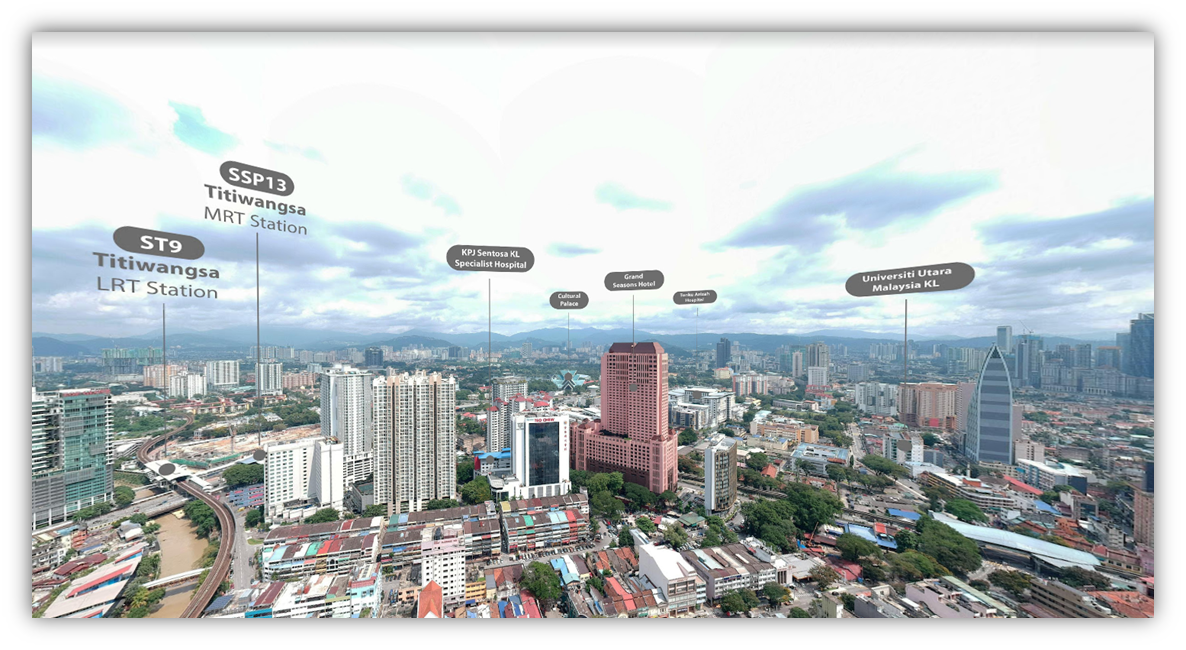The Future of Flood Mapping in Malaysia: Harnessing Technology for Improved Resilience
Andrew Chong • 2024-04-03
Explore the evolution and future of flood mapping in Malaysia, highlighting the impact of advanced technologies like remote sensing, GIS, and machine learning on disaster management. This article delves into how these tools are revolutionizing flood preparedness, offering real-time data and predictive models for better planning, resilience, and response to the increasing flood risks posed by climate change.
In Malaysia, floods have evolved into a frequent and deadly natural catastrophe that affects both rural and urban regions. Due to its geographic location and tropical environment, the nation is prone to flash floods and river overflow caused by intense rains. Flood mapping has become an essential technique for disaster management and mitigation in Malaysia as a result of the increased frequency and intensity of extreme weather events brought on by climate change. The future of flood mapping in Malaysia is now possible thanks to recent developments in technology and data analytics, which also present new opportunities to improve preparedness and resilience.
In the past, topographic maps and flood records have been used in Malaysia to identify high-risk locations for flooding. These approaches, however, have drawbacks, including a dearth of real-time data, poor resolution, and an inability to record shifting environmental circumstances. For flood mapping in Malaysia, cutting-edge technologies like remote sensing, geographic information systems (GIS), and machine learning are increasingly being used to address these issues and provide more precise and fast data for decision-making.
Flood mapping has been transformed by remote sensing, which uses satellite photos and aerial drones to collect high-resolution data over wide areas in real-time. Synthetic aperture radar (SAR) sensors on satellites allow them to see through cloud cover and collect information on the depth and dynamics of floods as well as the extent of surface water. On the other hand, aerial drones can deliver precise imagery of flood-prone locations, enabling quick assessments of flood risks and damages. More accurate and effective flood mapping is made possible by these remote sensing technologies, offering crucial information for disaster response and recovery activities.
Another essential tool for mapping floods is geographic information systems (GIS), which enables the integration and analysis of numerous data layers, including topography, land use, rainfall, and infrastructure. By simulating various scenarios and evaluating the possible effects of floods, GIS-based flood models can assist in identifying vulnerable areas and setting the priority of mitigating measures. The development of flood forecasting and warning systems, which are crucial for early warning and evacuation preparation, is also facilitated by GIS. GIS may be used to provide flood forecasts and alerts using real-time data from rainfall gauges, river gauges, and meteorological stations, allowing communities and authorities to take preventative action.
In Malaysia, machine learning and data analytics are proving to be effective tools for flood mapping. Machine learning algorithms may use vast datasets to find patterns and trends in flood occurrences, which helps with the creation of predictive models. These models enable proactive planning and resource allocation by accurately forecasting flood hazards. Additionally, image analysis using machine learning can be utilised to automatically identify flood extents and damage using satellite and drone imagery. As a result, manual mapping is not as necessary, and the process is more effective and scalable.
The future of flood mapping in Malaysia includes robust data management and information exchange in addition to technological developments. Government organisations, researchers, and local communities can all benefit from access to and analysis of flood-related data made possible by open data rules and platforms for data sharing. The creation of comprehensive and dynamic flood mapping systems that incorporate diverse data sources, technology, and knowledge can result from
The advantages of sophisticated flood mapping extend beyond catastrophe response and recovery and also help to foster long-term resilience. Urban planning and land use decisions can be influenced by flood maps, resulting in new developments being built in safe places and with flood resilience in mind. Flood mapping can help with the creation of insurance plans and financial tools that support risk management and disaster recovery. Additionally, flood maps can increase the general public's knowledge of flood dangers, which will enhance community participation in flood mitigation measures.
Attributed to improvements in data collecting and technology. LiDAR (Light Detection and Ranging) is one of the primary technologies that will shape how flood mapping is done in the future. LiDAR is a type of remote sensing that measures the separation between a sensor and the earth's surface using laser pulses. For flood mapping, LiDAR can be utilised to produce extremely accurate elevation maps.
Unmanned aerial vehicles (UAVs), or drones as they are more frequently known, are another technology that is influencing the future of flood mapping. Drones can be fitted with high-resolution cameras and LiDAR sensors that can record information on elevation, water levels, and other factors that affect floods. Drones are an excellent tool for mapping floods in remote locations since they deploy rapidly and easily.
Better data gathering practises and technology are both boosting flood mapping in Malaysia. In order to give real-time information on rainfall and water levels, the Malaysian government is investing in a network of meteorological stations and stream gauges. This information will be utilised to produce flood maps that are more precise and to construct flood early warning systems.
Collaborations between government organisations, academic institutions, and private sector businesses are another factor driving flood mapping in Malaysia. The sharing of information, skills, and resources depends on these collaborations. In order to promote flood mapping activities, the Malaysian government has also formed collaborations with foreign organisations including the World Bank and the United Nations Development Programme (UNDP). There are still issues that need to be resolved despite the bright future. Lack of public knowledge of the significance of flood mapping is one of the main issues. The dangers of flooding and the necessity for flood mapping are still largely unknown to Malaysians.
The lack of funding for efforts related to flood mapping is another issue. To ensure that it is done on a national basis, the Malaysian government has to devote greater resources to flood mapping. thanks to technological developments, improved data collecting, and partnerships between public sector organisations, academic institutions, and commercial businesses. It is critical that Malaysians are made aware of the value of flood mapping as a tool for reducing the effects of floods. To ensure that it is done on a national basis, the Malaysian government has to devote greater resources to flood mapping. By doing this, we can lessen the effects of floods and save Malaysians' lives and way of life.




